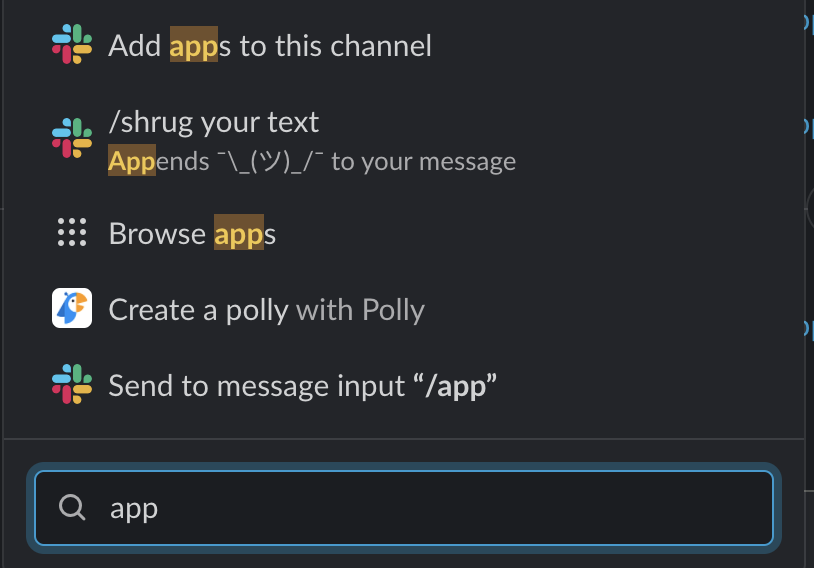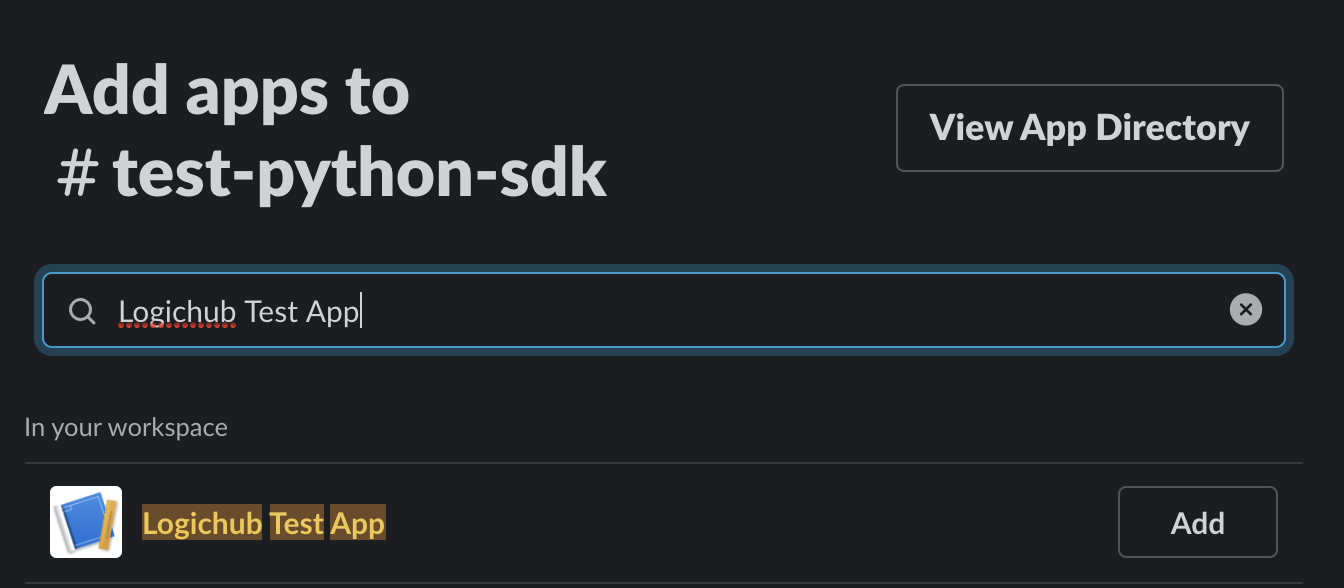Slack is a cloud-based set of proprietary team collaboration tools and services.
Connect Slack with Devo SOAR
Navigate to Automations > Integrations.
Search for Slack Web API.
Click Details, then the + icon. Enter the required information in the following fields.
Label: Enter a connection name.
Reference Values: Define variables here to templatize integration connections and actions. For example, you can use https://www.{{hostname}}.com where, hostname is a variable defined in this input. For more information on how to add data, see 'Add Data' Input Type for Integrations.
Verify SSL: Select option to verify connecting server's SSL certificate (Default is Verify SSL Certificate).
Remote Agent: Run this integration using the Devo SOAR Remote Agent.
Slack Application Token: Slack Application token for the application used.
After you've entered all the details, click Connect.
Actions for Slack
Post Message - Channel
Post a message on Slack channel.
Input Field
Choose a connection that you have previously created and then fill in the necessary information in the following input fields to complete the connection.
Input Name | Description | Required |
|---|---|---|
Message Template | Jinja-templated message string that will be posted on slack. Example: '{{message_col}}'. | Required |
Channel Name | Jinja-templated channel name. Example: {{channel_name_column_name}}. | Required |
Additional Fields | Jinja-templated JSON containing the additional fields for the Slack API. If attachments or blocks are included in this field, text will be used as fallback text for notifications only. Example: '{"blocks": [{"type": "section", "text": {"type": "plain_text", "text": "Hello world"}}]}' | Optional |
Output
A JSON object containing multiple rows of result:
has_error: True/False
error: message/null
result: Success message string
``` {json}{ "result":"Successfully posted message to Slack", "error":null, "has_error":false }
## Post Message - User
Post a message on Slack directly to a user
### Input Field
Choose a connection that you have previously created and then fill in the necessary information in the following input fields to complete the connection.
| Input Name | Description | Required |
| :--------------- | :----------------------------------------------------------------------------------------------------------- | :------- |
| Message Template | [Jinja-templated](doc:jinja-template) message string that will be posted on slack. Example: {{message_col}}. | Required |
| User Name | [Jinja-templated](doc:jinja-template) user name. Example: {{user_name_column_name}}. | Required |
### Output
A JSON object containing multiple rows of result:
- has_error: True/False
- error: message/null
- result: Success message string
``` {json}{
"result":"Successfully posted message to Slack",
"error":null,
"has_error":false
}
Posting message to private channels
Open the channel in slack app.
Type / to open the command palette
Click on Add apps to this channel
Search for your app and click on it.
Now you will see a successful addition message on the channel.
You can now use this channel with this App in the integration.
List User
Lists all users in a Slack team.
Input Field
Choose a connection that you have previously created and then fill in the necessary information in the following input fields to complete the connection.
Input Name | Description | Required |
|---|---|---|
Limit | Number containing the limit of users (Default is 10000). | Optional |
Output
JSON containing the following items:
``` {json}{ "is_bot":false, "name":"slackbot", "tz_offset":-28800, "is_admin":false, "team_id":"T0JS1", "tz":"America/Los_Angeles", "color":"757575", "is_owner":false, "has_error":false, "id":"USLACKBOT", "profile":{ "always_active":true, "avatar_hash":"sv41d98f0", "display_name":"Slackbot", "display_name_normalized":"Slackbot", "fields":{
}, "first_name":"slackbot", "image_192":"https://a.slack-edge.com/80588/marketing/img/avatars/slackbot/avatar-slackbot.png", "image_24":"https://a.slack-edge.com/80588/img/slackbot_24.png", "image_32":"https://a.slack-edge.com/80588/img/slackbot_32.png", "image_48":"https://a.slack-edge.com/80588/img/slackbot_48.png", "image_512":"https://a.slack-edge.com/80588/img/slackbot_512.png", "image_72":"https://a.slack-edge.com/80588/img/slackbot_72.png", "last_name":"", "phone":"", "real_name":"Slackbot", "real_name_normalized":"Slackbot", "skype":"", "status_emoji":"", "status_emoji_display_info":[ ], "status_expiration":0, "status_text":"", "status_text_canonical":"", "team":"T0JSAB8S1", "title":""
}, "updated":0, "error":null, "tz_label":"Pacific Standard Time", "is_ultra_restricted":false, "who_can_share_contact_card":"EVERYONE", "real_name":"Slackbot", "is_app_user":false, "is_restricted":false, "is_email_confirmed":false, "deleted":false, "is_primary_owner":false } ```
Release Notes
v2.1.3- AddedAdditional fieldsonPost Message - Channelaction.v2.1.2- 1 action added:List Userv2.0.0- Updated architecture to support IO via filesystemv1.0.3- Added documentation link in the automation library.


